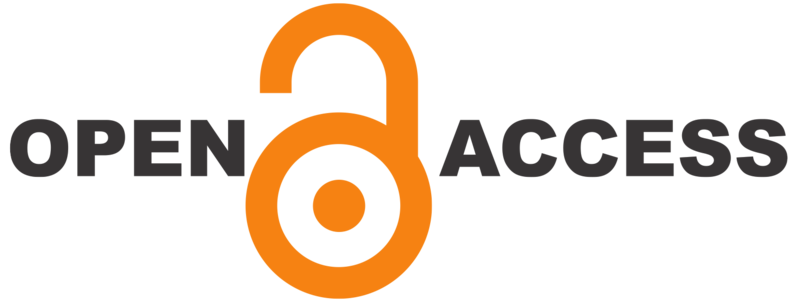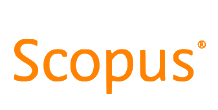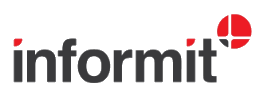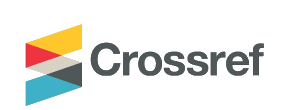Employability readiness for Aboriginal and Torres Strait Islander students: Yarning Circles as a methodological approach to illuminate student voice
DOI:
https://doi.org/10.21153/jtlge2021vol12no2art962Keywords:
yarning circles, employability readiness, Aboriginal and Torres Strait Islander students, work-integrated learning, methodological approachAbstract
This paper describes the current situation for Aboriginal and Torres Strait Islander graduates entering the workforce and compares this with personal reflections from current Indigenous students engaged in the tertiary setting. The purpose is twofold: first, to promote Aboriginal and Torres Strait Islander student voice; and second, to provide an avenue for this voice to contribute to and influence the design of employability programs in higher education. This study examines how the use of Indigenous research methods, such as yarning/yarning circles, can effectively and ethically collect data to amplify and promote the student voice in ways that conventional Western research methods currently fail to do. This amplified voice can create a platform for researchers and practitioners to understand students’ views and implement informed and tailored approaches to planning programs and delivering curriculum; in this case, employability-readiness skill sets for Aboriginal and Torres Strait Islander students in higher education. The findings are analysed thematically, and recommendations presented for higher-education institutions to consider when creating pedagogical approaches for the employability readiness of Aboriginal and Torres Strait Islander graduates.
Metrics
References
Arnold, W. W. (2018). Strengthening college support services to improve student transitioning to careers. Journal of College Teaching & Learning), 15(1), 5–26.
Australian Government (2020). Closing the Gap report 2020. Department of the Prime Minister and Cabinet. https://www.niaa.gov.au/sites/default/files/reports/closing-the-gap-2019/sites/default/files/ctg-report-20193872.pdf?a=1
Australian Council for Educational Research (ACER). (2017). Australian Education Review. https://research.acer.edu.au/cgi/viewcontent.cgi?article=1027&context=aer
Behrendt, L., Larkin, S., Griew, R., & Kelly, P. (2012). Review of higher education access and outcomes for Aboriginal and Torres Strait Islander people: Final report. Department of Industry, Innovation, Science, Research and Tertiary Education.
Bessarab, D., & Ng’andu, B. (2010). Yarning about yarning as a legitimate method in Indigenous research. International Journal of Critical Indigenous Studies, 3(1), 37–50.
Binder, J. F., Baguley, T., Crook, C., & Miller, F. (2015). The academic value of internships: Benefits across disciplines and student backgrounds. Contemporary Educational Psychology, 41, 73–82.
Business Industry and Higher Education Collaboration Council (BIHECC) (2007). Graduate employability skills. Australia: DEST. Available at: https://core.ac.uk/download/pdf/30688676.pdf
Career Trackers (2020). About: Endless opportunities. Huge impact. https://www.careertrackers.org.au/about
Carlson, B., & Frazer, R. (2018). Yarning circles and social media activism. Media International Australia, 169(1), 43–53.
Chomsky, N. (2003). Chomsky on democracy & education. Psychology Press.
Christians, C. G. (2000). Ethics and politics in qualitative research. In N. K. Denzin & Y. S. Lincoln (Eds.), Handbook of qualitative research (2nd ed) (pp. 133–155). Thousand Oaks: SAGE.
Clarke, M. (2017). Rethinking graduate employability: The role of capital, individual attributes and context. Studies in Higher Education, 43(11), 1923–1937. doi: 10.1080/03075079.2017.1294152
Connell, R. (2019). The good university: What universities actually do and why it’s time for radical change. UK: Zed Books Ltd.
Conrad, S. S. (2020). Experiential learning: Preparing students for the workforce through faculty mentorship and feedback in campus-based IT projects. Journal of Computing Sciences in Colleges, 36(3), 142–150.
Cross, T. L., Bazron, B. J., Dennis, K. W., & Isaacs, M. R. (1989). Towards a culturally competent system of care. US: Georgetown University Child Development Centre.
Dean, B., Eady. M., Glover-Chambers, T., Moroney, T., O’Donnell, N., & Yanamandram, V. (2018). UOW WIL pedagogy: Definition, classifications and principles. NSW: University of Wollongong.
Denzin, N. K., Lincoln, Y. S., & Smith, L.T. (2008). Handbook of critical and Indigenous methodologies. NY: SAGE Publications, Inc.
Department of Education (2014a). Selected higher education statistics: 2013 student summary. Canberra: Commonwealth of Australia. http://education.gov.au/selected-higher-education-statistics-time-series-data-and-publications
Department of Education (2014b). Completion rates of domestic bachelor students: A cohort analysis. Canberra: Commonwealth of Australia. http://education.gov.au/selected-higher-education-statistics-time-series-data-and-publications
Donovan, M. J. (2015). Aboriginal student stories, the missing voice to guide us towards change. Australian Educational Researcher, 42(5), 613–625. https://doi.org/10.1007/s13384-015-0182-3
Downey, S. N., van der Werff, L., Thomas, K. M., & Plaut, V. C. (2015). The role of diversity practices and inclusion in promoting trust and employee engagement. Journal of Applied Social Psychology, 45(1), 35–44.
Eady, M. (2010). Creating optimal literacy learning environments using synchronous technologies to support Aboriginal adult learners effectively: a Narungga perspective. Doctor of Philosophy thesis, Faculty of Education, University of Wollongong, 2010. http://ro.uow.edu.au/theses/3179
Englund, T. (2000). Rethinking democracy and education: Towards an education of deliberative citizens. Journal of Curriculum Studies, 32(2), 305–313.
Fletcher, G., Fredericks, B., Adams, K., Finlay, S., Andy, S., Briggs, L., & Hall, R. (2011). Having a yarn about smoking: Using action research to develop a ‘no smoking’ policy within an Aboriginal health organisation. Health Policy, 103(1), 92–97.
Foronda, C. L., Baptiste, D. L., Pfaff, T., Velez, R., Reinholdt, M., Sanchez, M., & Hudson, K. W. (2018). Cultural competency and cultural humility in simulation-based education: An integrative review. Clinical Simulation in Nursing, 15, 42–60.
Fredericks B., Kinnear S., Daniels C., Croft-Warcon P., & Mann J. (2017) Perspectives on enabling education for Indigenous students at three comprehensive universities in regional Australia. In J. Frawley, S. Larkin& J. Smith (Eds.), Indigenous pathways, transitions and participation in higher education (pp. 119-132). Springer. https://doi.org/10.1007/978-981-10-4062-7_8
Freire, P. (2000). Pedagogy of the oppressed. New York: Continuum.
Geia, L. K., Hayes, B., & Usher, K. (2013). Yarning/Aboriginal storytelling: Towards an understanding of an Indigenous perspective and its implications for research practice. Contemporary Nurse, 46(1), 13–17.
Gore, J. (2017). Why many high-achieving Indigenous students are shunning university. The Conversation. https://theconversation.com/why-many-high-achieving-indigenous-students-are-shunning-university-79749
Harvey, A., & Russell-Mundine, G. (2019). Decolonising the curriculum: Using graduate qualities to embed Indigenous knowledges at the academic cultural interface. Teaching in Higher Education, 24(6), 789–808.
Hunter, B., & Gray, M. (2017). Dynamics of indigenous and non-indigenous labour markets. Australian Journal of Labour Economics, 20(1), 1–20.
Hutchins, T., Frances, K., & Saggers, S. (2009). Improving the representation of Indigenous workers in the mainstream childcare workplace. Australasian Journal of Early Childhood, 34(1), 2–9.
Imtoual A., Kameniar, B., & Bradley, D. (2009). Bottling the good stuff: Stories of hospitality and yarnin’ in a multi-racial kindergarten. Australasian Journal of Early Childhood 34(2), 24–30.
Jackson, D. (2018). Developing graduate career readiness in Australia: Shifting from extra-curricular internships to work-integrated learning. International Journal of Work- Integrated Learning, 19(1), 23–35.
Kennedy, J. E., Thomas, L. K., Percy, A. J., Delahunty, J., Harden-Thew, K., Martin, B., de Laat, M., & Dean, B. A. (2018). Jindaola: An Aboriginal way of embedding knowledges and perspectives. Wollongong Australia: University of Wollongong.
Kovach, M. (2010). Conversational method in Indigenous research. First Peoples Child & Family Review, 14(1), 123–136.
Lac, V. T., & Mansfield, K. C. (2018). What do students have to do with educational leadership? Making a case for centering student voice. Journal of Research on Leadership Education, 13(1), 38–58.
Lin, I., Green, C., & Bessarab, D. (2016). ‘Yarn with me’: Applying clinical yarning to improve clinician–patient communication in Aboriginal health care. Australian Journal of Primary Health, 22(5), 377–382.
Lin I., O’Sullivan, P., Coffin, J., Mak, D., Toussaint, S., & Straker, L. (2014). I can sit and talk to her: Aboriginal people, chronic low back pain and healthcare practitioner communication. Australian Family Physician, 43(5), 320–324.
Lucas, P. (2017). Positioning critical reflection within cooperative education: A transactional model. Asia-Pacific Journal of Cooperative Education, 18(3), 257–268.
Mansouri, F., Jenkins, L., Morgan, L., & Taouk, M. (2009). The impact of racism on the health and wellbeing of young Australians (2nd ed.). Melbourne: Foundation for Young Australians.
Martin, K. (2008). Please knock before you enter: Aboriginal regulation of outsiders and the implications for researchers. On line: Cambridge University Press.
Martin, K. L. (2016). Voices and visions: Aboriginal early childhood education in Australia. NSW: Pademelon Press.
Martin, R., Fernandes, C., Taylor, C., Crow, A., Headland, D., Shaw, N., & Zammit, S. (2019). ‘We don’t want to live like this’: The lived experience of dislocation, poor health, and homelessness for Western Australian Aboriginal People. Qualitative Health Research, 29(2), 159–172. https://doi.org/10.1177/1049732318797616
Martin, A. J., Rees, M., Fleming, J., Zegwaard, K. E., & Vaughan, K. (2019). Work-integrated learning gone full circle: How prior placement experiences influenced workplace supervisors. International Journal of Work-Integrated Learning, 20(3), 229–242.
Mitra, D. L. (2006). Youth as a bridge between home and school: Comparing student voice and parent involvement as strategies for change. Education and Urban Society, 38(4), 455–480. doi:10.1177/0013124506287911
Mitra, D. L. (2008). Strengthening student voice initiatives in high schools: An examination of the supports needed for school-based youth-adult partnerships. Youth & Society, 40(3), 311–335. http://yas.sagepub.com/content/early/2008/04/01/00441 18X08316211.short
Mitra, D. L. (2009). Collaborating with students: Building youth-adult partnerships in schools. American Journal of Education, 115(3), 407–436. doi: 10.1086/597485
Mitra, D., & McCormick, P. (2017). Ethical dilemmas of youth participatory action research in a democratic setting. International Journal of Inclusive Education, 21(3), 248–258.
Mooney, J., Riley, L., & Blacklock, F. (2018). Yarning up: Stories of challenges and success. Australian Journal of Education, 62(3), 266–275.
Oliver, B. (2015). Redefining graduate employability and work-integrated learning: Proposals for effective higher education and disrupted economies. Journal of Teaching & Learning & Graduate Employability, 6(1), 56–65.
Parker, A. K., & Neuharth-Pritchett, S. (2009). Calming rough waters: Teacher strategies for smoothing the transition to middle school. Childhood Education, 86(1), 20–26.
Rigney, L. (2011). Indigenous higher education reform and Indigenous knowledges. Canberra: Department of Education, Employment and Workplace Relations. http://docs.education.gov.au/documents/indigenous-higher-education-reform-and-indigenous-knowledges
Schnoes, A. M., Caliendo, A., Morand, J., Dillinger, T., Naffziger-Hirsch, M., Moses, B., ... O'Brien, T. C. (2018). Internship experiences contribute to confident career decision making for doctoral students in the life sciences. CBE Life Sciences Education, 17(1), ar16. doi:10.1187/cbe.17-08-0164
Simmons, D. N. (2019). You can't be emotionally intelligent without being culturally responsive: Why FCS must employ both to meet the needs of our nation. Journal of Family and Consumer Sciences, 111(2), 7–16.
Small, L., Shacklock, K., & Marchant, T. (2018). Employability: A contemporary review for higher education stakeholders. Journal of Vocational Education & Training, 70(1), 148–166.
Social Research Centre (SRC) (2018). 2018 Graduate Outcomes Survey-Longitudinal (GOS-L): Medium-term graduate outcomes. Canberra: Australian Government Department of Education and Training.
Social Research Centre (SRC) (2018). 2018 Graduate Outcomes Survey. Canberra: Australian Government Department of Education and Training.
St. John, K., & Briel, L. (2017). Student voice: A growing movement within education that benefits students and teachers. USA: VCU Center on Transition Innovations. https://vcurrtc.org/resources/viewcontent.cfm/1354
Stone, C. (2017). Opportunity through online learning: Improving student access, participation and success in higher education. National Centre for Student Equity in Higher Education (NCSEHE), Curtin University.
Toshalis, E., & Nakkula, M. J. (2012). Motivation, engagement, and student voice. In N. Hoffman, A. Steinberg, & R. Wolfe (Eds.), The students at the center series, 1–42. Washington, DC: Jobs for the Future.
University of Wollongong (UOW) (2020). Human ethics, research and innovation. https://www.uow.edu.au/research-and-innovation/researcher-support/ethics/human-ethics
Villalobos, B. T., Bridges, A. J., Anastasia, E. A., Ojeda, C. A., Hernández Rodriguez, J., & Gomez, D. (2016). Effects of language concordance and interpreter use on therapeutic alliance in Spanish-speaking integrated behavioural health care patients. Psychological Services, 13(1), 49–59.
Walsh, L., Black, R., Zyngier, D., & Fernandes, V., (2019). Harnessing student voice and leadership: A study of one Australian Indigenous leadership program. Pedagogy, Culture & Society, 27(3), 383–401.
Wellington, S. (2019). Ambitious new targets for Indigenous students in NSW. NSW: NITV. https://www.sbs.com.au/nitv/article/2019/06/27/ambitious-new-targets-indigenous-students-nsw
Wierenga, A., & Wyn, J., (2011). Generic Youth Development Framework: A discussion document for Department of Defence. Melbourne: Youth Research Centre, Melbourne Graduate School of Education, University of Melbourne.
Winchester-Seeto, T., Mackaway, J., Peach, D., Moore, K., Ferns, S., & Campbell, M. (2015). Principles, guidelines and strategies for inclusive WIL: A resource for academics, practitioners and higher education institutions involved in the delivery of work integrated learning. In ACEN 2014: Conference Proceedings of the 2014 Australian Collaborative Education Network National Conference: Work Integrated Learning: Building Capacity. Victoria: ACEN. http://acen.edu.au/access-participation-progression/wp-content/uploads/2015/11/FINAL-Principles-Guidelines_and_Strategies-Inclusive-WIL-as-at-6_11_15.pdf












